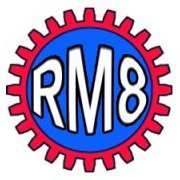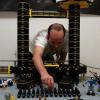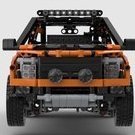Search the Community
Showing results for tags '4x4'.
Found 213 results
-
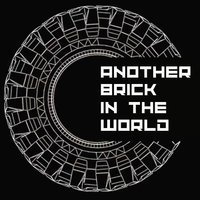
4x4 Raid Buggy V2 with 2-speed Gearbox and BuWizz motors
Another Brick in the World posted a topic in LEGO Technic, Mindstorms, Model Team and Scale Modeling
Hello again, Back in March 2023 I started my YouTube channel with my Raid Buggy. Granted, it look somewhat crude and it was quite slow, but it was my first model with BuWizz motors and bricks so it has a special place my heart. Recently it was the 1 year anniversary of it, and I decided to make a remake of it to prove some how much my LEGO building skills have changed and to honor the original model and channel. So enough with the backstory, let's get to the details: Features 4 Wheel drive with a 2-speed gearbox steering with double steering racks Soft double-wishbone suspension Working gear stick Bodywork built to resemble the original model One of the things that I wanted to show with this model was that you don't necessarily need 4+ BuWizz motors in order to make a good fast off-roader. For this, I decided to make use of a 2-speed gearbox, which has a low gear with the same gearing as the Raid Buggy V1 and the high gear which is some 67% faster (6.2 km/h). The gearbox design was heavily based off @Zerobricks's excellent Simple Off Roader but modified to fit my needs. Another benefit of this is that it has a neutral gear, which is very useful for downhills. From then, I finished it off with the axles of my Monstermog and the chassis was done! from there, I had to build the bodywork, the part that I had been dreading the most For me the body was a very important part, as I wanted to make it reminiscent of the original yet it would have a more sporty look and a stronger construction. Just like the first model, it uses many connectors in @Attika's characteristic style. In the end, the bodywork suffered many changes but I consider them for the better, as it now has a more imposing look and a much more sturdy connection so it can be rolled over without having to fear of breaking it. And now a few more images: The model ended-up being a very good off-roader, with a somewhat high speed (6.2 km/h) yet with some torque left for harder off-road. I pretty much had no issues with it, except the front open differential which sometimes got in the way when off-roading in the low gear. It's otherwise a model more focused on high-speed on uneven terrain so I'm happy with it If you would like to build this model, you can download the .io file at rebrickable here. And as always, here's a YouTube video containing some off-road footage, functions showcase, and some nice Punk Rock music Feel free to post a comment about what are your thoughts about it, and see you in the next one! -

Simple Off-Roader + Instructions
Zerobricks posted a topic in LEGO Technic, Mindstorms, Model Team and Scale Modeling
Many people have been asking me for a simple, easy-to build and most importantly cheap Off-Roader. When I started this project, I've set myself the following guidelines: Use a single BuWizz 3.0 and "only" 2 BuWIzz drive motors Implement a 2 speed gearbox Maximize the ground clearance by using a pendular axle (this way the independent suspension doesn't have to loose ground clearance when going over obstacles) The model has to be built from under 500 parts All the parts have to be standard and in current production Keep the number of different parts as low as possible Use color coding to simplify the building process Design the model so that it can easily be modified by other builders Create proper building instructions And this is what I came up with in the end: I managed to successfully realize the all the planned functionality, features and more: All wheel drive 2 speed gearbox Pendular front axle Independent suspension on all wheels Openable doors for easy acces to the charging port Interior with seats and a steering wheel The dimensions and specs are as following: Built out of ~460 parts 27 x 20 x 13 cm ~ 850 grams Top speed of 7 km/h As usual there's a video showcasing the model in more detail: But just building the model and recording the video was only half the story. I also taught myself how to create the building instructions using the Studio which can be found here: https://bricksafe.com/pages/Zblj/simple-off-roader Since these are my first such instructions, they may not be ideal... So in a case of any issues, confustion, or such I also uploaded the .IO and .LXF files which can be found in the corresponding Bricksafe folder: https://bricksafe.com/pages/Zblj/simple-off-roader All in all this was a great learning experience, I'm always happy to learn a new skill and being able to create my own instructions sure is a good skill to have as a LEGO builder. To conclude; using this as a base, I wonder what kind of tweaks, improvements and crazy mods other builders will come up with!- 17 replies
-
- instructions
- buwizz
-
(and 5 more)
Tagged with:
-

[WIP] Rate my axle setup
damian_kane_iv posted a topic in LEGO Technic, Mindstorms, Model Team and Scale Modeling
I'm trying to design a realistic 5-link axle for an upcoming crawler idea. I wanted to make a genuine 5-link with as much travel as possible and a differential locker. I think I have the geometry 99% there. I also plan to add pneumatic shocks to complement/dampen the coil springs. Lego's new springs were appealing and compact, but the 9.5L springs have much more travel needed for high axle articulation. Let me know what you think/how it can improve: Here you can see the coils, the shock and most of the suspension links. This is a close-up with the pneumatic cylinder removed. The axle is designed for ~1:9-1:11 sized mocs and can be fitted with either a portal axle mounts (pictured here), or traditional ungeared mounts. Here you can see the lower control arms, the panhard rod, and diff locker. Here's a picture of the underside. I based this design off of Madoca's Dacoma axle. This was originally designed to accommodate a power ball joint for a more trophy truck-like suspension, but I have converted it into a 5-link axle design and scaled it up for 1:10 models. Finally, the underside of the chassis contains the upper control arms, mounting for panhard (bottom), and the driveshaft As you can see, this was formerly a powerjoint setup and can be converted back if desired. -
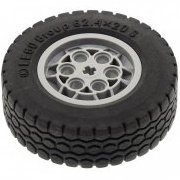
[MOC] [WIP] 42122 Technic Jeep Rubicon Remake/Upgrade
Fluwoeb posted a topic in LEGO Technic, Mindstorms, Model Team and Scale Modeling
Hello everyone, This is Evan here with my first Eurobricks topic! I decided as soon as I obtained the 42122 Technic Jeep Rubicon set to massively upgrade it (similar to what y'all did here, here, and here). The only difference is that I am starting from scratch and rebuilding the whole vehicle based on the original set to not only be more functionally proficient (which is the focus of this venture), but also to look a little bit more aesthetically appealing;) As per my preference, I will start with the functionality. Since everyone else put the differentials in the axles, I decided at first to take a different route and take them out of the axles and instead put them in the cabin. See the following pictures of the front axle: Maybe this idea will work for you in a different project, but I quickly found out that it would not work for my MOC after making a few test chassis assemblies. By displacing the differentials from the axles to the center of the vehicle greatly increases the area that the drivetrain takes up in the cabin of the Jeep, so I decided to go with the differentials in the axles. As you can already see, I went with the CV joints for the steering drive connections just like Zerobricks did. However, I decided to go with the mustang wheels to center the steering pivot more. Also, I added Ackerman geometry to the steering system out of necessity. See the following pictures: I used this piece to connect the steering gear to the axle frame with the gear that drives the differential. It works quite well. Also, the steering rack is held in place by the actual "U" technic frame. Please let me know what you think of it so far, I will continue to update it until I finish it! -

Lego Mini Jeep Wrangler 1:15 MOC
dpi2000 posted a topic in LEGO Technic, Mindstorms, Model Team and Scale Modeling
Mini Truck Model 8, Jeep Wrangler 1:15.No play Lego in over half a year, now 'Jeep' coming...At the same time,I would pay respects to Madoca.L motor +new wheel hubs, BuWizz normal.Infomations:L28xW14.5xH15cm, Weight: 970G,Still, simple and good playability, like RC, like real Jeep. instructions for free: https://rebrickable.com/mocs/MOC-79593/dpi2000/lego-mini-truck-wrangler-115-moc/#detailsThanks, again! Trial video This chassis part was built last year. -
Hello Eurobricks community! Let me introduce my latest MOC - Hummer H1 out of Lego pieces. It has approx 3800 parts, incl 7 Motors. Functions are: - Independent suspension of all wheels - 3 RC differentials like in the real model - 8 Cylinder engine - module build - easy removable hood and body. - 4 L motors for drive- Servo for steering- M motor for the winch- L Motor for diffs lock VIDEO: All photos: https://bricksafe.com/pages/Aleh/mercedes_770/hummer_instructions To start this model I was inspired of two things: 1) This video 2) Humvee from CADA Most wanted render: Building instructions are available: https://rebrickable.com/mocs/MOC-174585/OleJka/hummer-h1/#details
-

Universal 4x4 off-roader
Zerobricks posted a topic in LEGO Technic, Mindstorms, Model Team and Scale Modeling
This model (and it's prototypes) are a result of the following topics: Basically the idea behind this project is to make an offroader capable of driving on all kinds of terrain with a simillar perofrmance as the Wildcat 6x6 but having a lower weight So, why would I want to reduce the weight? While the wildcat 6x6 works great most of the time, it's high weight of 2,5-3 kg has some drawbacks: The model requires a lot of expensive electronics (12 BuWizz motors, 6 BuWizz 3.0 bricks) High part count (1869 pieces) Tendecy of front wheels falling off at hard landings High wear and tear of the individual components, which lead to premature failure - planetary hubs, CV joints And lastly high wear and tear of the handler due to it's heavy weight Of course decreasing the weight also means decreasing the power to weight ratio, since there will always be components which are needed regardless of the number od drive motors like wheels, hubs, steering system, suspension and frame. The first protoype, which I simply call Light 4x4 used only 2 BuWizz motors coupled to a 2 speed gearbox: While the model worked good in low gear, the high gear proved much trickier. The single gearbox put a lof of strain on the drive axle in high gear, causing it to melt, even with lubrication. Another issue was the high load of the motors in high gear, resulting in them overheating, while the motor could not even remotely apporach the 15 km/h top speed of the Wildcat 6x6. But not all was bad, I really liked the free-moving front suspension which acts like a suspended pendular axle, while having a much lower unspring weight. While I could make the rear suspension act like a pendular axle instead off front, i decided agaisnt it, since most of the weight is shifted back when crawling and I wanted to keep the rear stable. With that knowledge, I went back to the drawing board and decided to up the power for the next version... Medium 4x4 prototype: This version used 4 BuWizz motors coupled in a manner simillar to my 1:10 Acura NSX which negates the sideways load on the output axle of the gearbox. As you can see, this version was quite bigger and it used the reinforced differentials. The increased power drastically improved the performance, the top speed and overall power being simillar to the Wildcat 6x6. BUT the model had a few problems, main being the exposed gearbox which would get clogged and jam while driving outside. This version was aslo wider compared to the first prototype. Medium version prototype 2: This is another concept where the entire front axle is designed to pivot, but I ultimately decided to go agaisnt it due to the higher center of gravity and higher unspring mass. The final, universal 4x4 model: I have built and tested the model, but have yet to make any media, that's why I'm using LDD photos for now. I had to way to make the model more ingress resistant and narrower. This is where I came up with the idea of using the new, reinforced differentials as 28 tooth clutch gears for the high gear of the gearbox: This way the gearbox's output axle was moved a stud lower, allowing me to cover the bottom of the model with panels which prevent the dirt from getting into the gearbox without sacrificing ground clearance: The model inherited the front axle from the prototypes which acts like a free pendular axle. This keeps the weight even on both side of the suspension sosimple open differentials sufficed without a need for lockers. The gear ratios are a bit of a compromise comapred to the Wildcat 6x6, with low gear being 0,89x the ratio and high gear being 0,83x the ratio. Even with these differences, the model still reaches a very simillar speed in high gear, probably due to lower friction losses and lower rolling resistance. All in all I think this is a worthy successur to the Wildcat 6x6, even though it may not be as flashy, massive or functional (no skid steering). Final part count is 774 pieces which is 41% od the Wildcat 6x6 and the weight has been reduced to around 1,4 kg - around half of the Wildcat 6x6. I will be creating a proper in-depth video about the finished models and the protoypes, so I suggest you to watch this space for more upcoming details. -
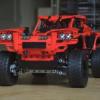
[MOC] MG Metro 6r4
Samolot posted a topic in LEGO Technic, Mindstorms, Model Team and Scale Modeling
MG Metro 6r4 is a car that has always fascinated me, it was a truly diabolical idea ahead of its time. https://www.youtube.com/watch?v=ZYSIwYRomTw I built this model in 2016 but never recorded a video and didn't show it on the forum. I wanted to take it to some nice motoring event, to a photo and video session, but it didn't work out. This is what the prototype looked like. Then I waited a long time for the stickers and finally I decided to take it apart and that was the last moment to publish it, so here it is. Now, it's not unusual to make WRC cars out of city cars, see e.g. Toyota Yaris. But in the 1980s, more representative models were chosen as bases for rally cars. Meanwhile, MG used probably one of the most boring cars in history, the Austin Metro, as the basis for building this monster. https://en.wikipedia.org/wiki/Austin_Metro The effect, surprisingly, was amazing: one of the most iconic rally cars in history was created. The model is not particularly original and full of innovative solutions, especially since it is already 7 years old. But there are a few curiosities that hide. First of all, it has four-wheel drive and independent suspension of all wheels, which with the width of the car required the use of floating differentials (they move with the suspension), and while at the rear it did not cause any special problems, at the front it required the use of a steering system floating together with the differential. And it wasn't that easy, especially since I wanted to have the steering wheel still working. In the end, it all worked out, but the front suspension only becomes fully rigid when the body is fitted. It was my first model with a body designed from the beginning as an easily removable structure. It can be removed after removing the 6 pins. At one time, I was very pleased with the simple mechanism of latching the doors and the complicated way of installing the panel above the front wheel arch. -

Universal off-roader 4x4 V2
Zerobricks posted a topic in LEGO Technic, Mindstorms, Model Team and Scale Modeling
As soon as I saw the new parts in the 42159, I knew I just have to use them to upgrade the previous version of the Universal 4x4 off-roader. After tinkering for a few weeks in LDD, and actually building it IRL yesterday, it is officially finished: The V2 has a big list of upgrades comapred to V1. Dual independent drive, one for left and other for right wheels - allowing skid steering Two 3 speed gearboxes - that's right, this is my first off road vehicle with 3 gears for optimal performance Improved steering system - much more direct, accurate and responsive Highly modular design - easier access for maintenance and charging Top speed has been increased by 40% both in low and high gear - the previous version had ample torque, so I geared up all the ratios by 40% and added a middle gear Increased suspension travel at the rear - first time I'm using 11 studs long suspension arms Improved drive motor mounting - now they are no longer at a weird angle Similar part count to the V1 - even though it's 2 studs longer and has way more functionality it has only 20 or so extra parts, totalling at 796 (I tried to keep it under 800) Here you can see how the model looks in LDD: Overview of drive, switching and steering drivelines: The dual driveline is powered by 4 BuWizz motors, 2 motors for each side. The lower PU L motor moves the steering rack via an 8 tooth gear. A second, higher mounted PU L motor spins 4 wave selectors via 8 and 28 tooth gears which in turn switch between the 3 gears. The gearboxes have the following gear ratios: First gear is 20/16 = 1,25 - totalling 4,32:1 gear ratio from motors to the wheels Second gear is 24/12 = 2 - totalling 2,7:1 gear ratio from motors to the wheels Third gear is 28/8 = 3,5 - totalling a 1,37:1 gear ratio from motors to the wheels Thanks to the 3 speeds gearboxes, the model has plenty of torque to climb at 45°+ degrees angle, yet can also reach a speed of over 18 km/h, making it my fastest dedicated off-roader to date: Testing it outside, jumping over pump track course, driving through tall grass, etc... I have yet to encounter any major issues. The model is reliable, fast and can take a beating/rollover with ease. So far I'm really happy with it and can't wait to record more media and publish it soon, so stay tuned!- 35 replies
-
- skid steering
- gearbox
-
(and 4 more)
Tagged with:
-
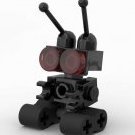
[MOC] Prodrive BRX Hunter (Alternative build for 42141)
A Great Builder posted a topic in LEGO Technic, Mindstorms, Model Team and Scale Modeling
This is my second alternative build of McLaren F1 42141. This time I was inspired by Dakar rally and I made a version of Sebastien Loeb's Prodrive RX Hunter. This is the 2022 version and just like all my Technic model based on a real car; I invested a lot of effort into making it as close as possible to the real counterpart. I was able to reproduce the position of the engine, The curved shaped roof, doors and even the spare tire!Functions:- Independent suspension in all wheels- V6 fake engine (located inside the cabin just like the real car!)- HoG steering- Opening doors (Butterfly doors)I am no good at stickers but I made a basic sticker sheet that I am including as optional.Can't wait for the Audi RS Q e-tron???Don't worry! This one will keep you busy. Instructions on rebrickable as always: https://rebrickable.com/mocs/MOC-152876/A_Great_Builder/prodrive-brx-hunter/#details -
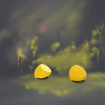
Lego Technic Tamiya Neo Fighter buggy (but it is 4x4)
Lixander posted a topic in LEGO Technic, Mindstorms, Model Team and Scale Modeling
Among those 3 buggy`s/ truggy`s that I have to test-build them I just managed to add a 4th one. This one is the first 4x4 with 2 motors. As usual, it packs some buggy motors (2 of them, as I said), a servo, removable body (at least semi-detachable), positive caster-angle and full independent suspension. The weight is just under 900g; pretty decent, considering it is 4x4 and that has a pretty big body and some useless pieces to imitate the electric motor of the real RC buggy. Unfortunately, I think that this will only be available with normal RC batteries, because almost no existing hub for Lego is not fitting. -

1:10 Large - scale motorized 4x4 Tow truck
Zerobricks posted a topic in LEGO Technic, Mindstorms, Model Team and Scale Modeling
I don't usually post my work projects here, but every so often there is a special one that I really want to showcase more in detail. Today I want to show you one of my all-time favourite projects, which is packed both full of functionality and a very high level of detail. Before we go into the details, lets' first let's talk about the idea behind it. We (the BuWizz team) have been cooperating with Slovenian AMZS (Slovenian Automobile Association) for a while now and they are the ones who allow us to record the various speed breaking and such events on their polygon. An idea emerged for a project to design and loose replica of their existing Tow Truck which is to be used for education purposes. Here's how one of their tow truck looks like: I decided to use this specific model as an inspiration of my representation and here were the basic starting functions and features: 1:10 scale Capable of lifting and towing an actual 1:10 model like 42125 All Wheel drive Working gearbox Realistic suspension Highly detailed As with most of my projects, i first started working in LDD and this is what the first prototype looked like: I took some liberty with the shape, notably I removed the crew compartment in order to better the lift arm details. As the project progressed, so did the amount of functions, features and details until I ended up with this long list: Motorized with 11 motors Powered by 2 BuWizz 3.0 Pro bricks All wheel drive powered by 4 BuWizz motors Working gearbox with a high and low gear 3 differential locks Independent suspension in the front Solid rear axle in the back which uses 3x13 curved panels as leaf springs Working V8 engine connected to the drive motors Functioning steering wheel linked to the steering rack Motorized lift which can unfold, raise and lock onto thr wheels of the towed vehicle A motorized winch in the rear Working front LED lights Opening doors, hood and compartments Detailed engine bay with battery, air filter and washer fluid Compartments filled with details such as fuel canisters and various tools Other details include cones and fire extinguishers 3D printed braking discs in the front for show Total piece count is around 3060 parts Just over 3 kilograms 51 cm x 24 cm x 22 cm when folded excluding mirrors Capable of lifting and towing a 1:10 scale car like 42125 even up a steep hill Top speed of 10 km/h Here's an overview of the model and the basic mechanical functions: Driveline is powered by 4 BuWizz motors. The motors drive a 2 speed gearbox and a fake V8 engine: Gearbox is powered by a PU M motor and uses 2 mini linear actuators to switch between low, neutral and high gear: Each of the 3 differentials has it's own lock, actuated by a wave selector and powered by a PU M motor: Steering system is powered by a PU L motor and uses two steering racks in order to both steer the wheels and turn the steering wheel: Finally, there are several more PU M motors used to power the rear arm. The main actuators lift the whole arm and are powered by 1 PU M motor: Another PU M motor is used to unfold the lower part of the lift arm using 2 mini linear actuators: Finally another PU L motor is used to lock the wheels with two more mini linear actuators. The driveline is designed in such way that the arm can swing a bit while cornering: The lifting arm had to be designed to be as strong as possible, yet thin enough to slide under the car we want to tow. The final version was under 2 studs high and capable of lifting a 2 kilogram heavy model with ease: With all the details finalized and the parts omptimized in the LDD version, it was time to build the real deal: As mentioned above, the model is full of details that can be accessed by opening the various compartments: The rear view showing the folded tow arm and the 2 large actuators used to lift it: Few more pictures of the model next to the real deal: Of course no Technic photoshoot wouldn't be complete with the most important photo of them all, the underside: The underside was left open and exposed intentionally, so that the gearbox, the differential locks and steering system can be observed. Of course as with all the projects, this one also had some issues, the biggest being the use of 3x11 curved panels as the rear leaf springs. Originally only a single pair was used to support the weight in the rear and the additional load of a towing vehicle, but it soon proved too much for them and over time they ended up breaking. That is why for the final fix, they were doubled, to increase the stiffness and durabilty of the rear axle: Other than this, there were no other major issues with the model. The driveline has yet to skip a gear, the joints are holding (even the small CV joint used in the front left side) and the model ended up being robust enough for some really rough driving. As mentioned at the start of the topic, this is one of my best models to date, I'm really happy with the amount of sheer functionality, features and details I managed to cram in it and it will forever hold a special place in my heart. To wrap up this already long topic, here's a couple of videos of it in action: -

[MOC] Off-road truck Gaz 66[instructions available]
keymaker posted a topic in LEGO Technic, Mindstorms, Model Team and Scale Modeling
Hi, I would like to present my newest creation – off-road truck Gaz 66. It is my interpretation of small, old and very popular truck, which has a lot of off-road capability. Someone can ask why next similar small scale off road truck? I would say I like this type of vehicles, the scale and challenges they bring. And with every build I try to test something new, which I wasn't try before. Here the main goal was to go below standard for those wheels width of the model - 15 studs and prepare narrower axles than standard - 11 studs ones. Which I did. Gaz 66 has 13 studs width body with 9 studs (from rim to rim) front axle - stereed and driven. Thanks to that size of the body is more proportional to used wheels. And you can also use tractor tires provided with cargo for even better effect (you can see such modification in real Gaz 66 on one of polish off-road YT channel - LINK). I also tried to add as many details related to real truck as possible, in this scale, I hope there are here some fan of original Gaz 66 and they will recognise some elements I added. Below you can find video and list of features and details. Enjoy. Instructions: LINK General details scale: 1:20 dimensions LxWxH: 30x10,5x12,5cm weight: 946g Features: RC front axle steering (C+ L motor) RC 4x4 drive (C+ L motor) RC winch with place to lock the hook (C+ L motor) 4-link live axle suspension for all 4 wheels three studs ground clearance (with "KrAZ" tires) openable doors and easy access to spare tire working V8 engine with fan located in cabin, plus grill via which working engine can be watched detailed two seats cabin powered by Buwizz 3.0 but also prepared to be powered by standard C+ Hub can operate with "KrAZ" tires included in cargo Photos: LINK My Gaz 66 is powered by Buwizz 3.0, but there is no problem to use standard C+ Lego battery box: Internals of the MOC, so drivetrain connected with V8 engine, steering and the winch: -
Hi Yes, again but with a lot new features! This Toyota Hilux 4WD / Pickup Truck in its most basic version with a simple cab and the largest possible cargo area is a typical workhorse One more extra body will be in the end;) You can use youtube autotranlastion functions to understand something:) Or just watch review and test drives. Common specs Solid axles Front suspension 4 link Rear suspension 3 link Openable doors, bonnet, tailgate 2-seater saloon LED front lights (option) Removable pickup bed and cab Wheels: 62-68 mm Power functions chassis Control: PF IR / Smart Brick (SBrick) / BuWizz Drive: PF XL motor, 4x4 transmission with axle differentials and rear auto-lock Steering: PF Servo motor Control+ chassis control: Control+ (Powered UP) / BuWizz 3.0 PRO drive: Control+ L motor, 4x4 transmission with axle differentials and rear auto-lock Steering: Control + L motor FACELIFT The exterior has been slightly redesigned and optimized, including the use of new elements and techniques that have appeared in recent years. However, I haven't given up on some simple and solid tech-style solutions in favor of smoother slicker solutions like in the Back to the Future Extra Detail version. The doors now have latch locks, since the old locks on the small cab cannot be implemented. The number of basic system elements has been reduced - now the front bumper is made in a technic style with a small nuance - the mounting of the lights in the bumper is illegal and orange tile parts can fall out and get lost. The interior uses a new steering wheel with a diameter of 4 (for PF cersion). If you do not have one, use the old one with 3. In order to prevent using boring monochromatic paints, retro-style colored stripes are added. You can refuse them in favor of plain assemblies. Initially, there are two color options - white and black. Maybe there will be other colors in the future! I believe you can build red, orange and blue versions with minor mods. CHASSIS: PF and C+ The chassis in PF version still runs on Power Function elements, despite the fact that they have already been discontinued by LEGO in favor of the new Powered Up - Control +. Power Functions are quite common among fans, in the secondary market, as well as in the market for third-party parts and electrics, which, at relatively low prices, makes the model affordable for assembly with low budget. On the results of operation, a number of important improvements have been made to chassis: A fairly common reinforced differential of a new type was used. This diff has a larger gearing of 12-28 versus the old 20-28, giving the model more torque at the price of speed. This is important when using larger wheels, both 68mm and 75mm. But more importantly, the new differential significantly decrease load the universal joints. When using standard 62 mm wheels and standard power, the cardans held the load well, however, with the increase in wheels and especially when using third-party more powerful power sources like BuWizz, the cardans could break. The new differential partially removes the problem, but if you modify the model by installing larger wheels that are more tenacious and using more powerful power sources, I advise you to also buy steel universal joints. In general, you can get by with the old differentials, but with standard 62mm wheels and standard power. By the way, in the rear axle drive, instead of a cardan, a reinforced new CV joint is now used. The second important point is the redesigned front axle mount to increase the front clearance by 0.5 STUD. This update is linked to the first improvement. For larger wheels, you need to mount the axle further from the frame. Moreover, during the operation of the front suspension, the longitudinal displacement of the axle is significantly reduced due to the longer levers and the angle of their attachment. Due to the use of a new steering servo differential, the motor had to be reversed And finally, new function! Rear differential with automatic locking in case of diagonal misalignment of the rear axle. Significantly increased off-road performance of the model will make you happy! The locking mechanism prevents loss of grip during diagonal hanging. The mechanism uses an orange wave shift clutch. The idea was adopted from idea of @Madoca 1977 . The rear axle design can also be used with older type differentials. In addition, you can build a simple and reliable old axle without a lock (but with a new differential), in case you need simple construction. Finally, I decided to upgrade to the new Control+ / Powered UP LEGO motor system. It was a matter of time, because new original PF elements are harder and expensive to find. This is especially true for the SERVO motor. New LEGO fans usually have Control+ elements only. First of all, C+ «bad» for its dimensions: all motors are larger in size. The 4 port HUB is severely limited by the layout of the model due to its large size and weight. Installing a hub in a model of my size while saving the interior will negatively affect the weight distribution and off-road performance of the model. Specifically, in this model, the Hub will be difficult to hide behind seats without adding a body cover. In the end, a compromise solution was made - to place the unit inside the cabin as low as possible. I had to sacrifice seats, but I managed to leave the backs and the instrument panel with the steering wheel. If you do not open the doors, you may not even notice that half of the cabin is occupied by the hub. Therefore, from the outside, the model looks like a regular PF. It should be noted that due to the low location of the hub, it was necessary to make the frame as thin as possible at the point of attachment of the block, which negatively affected the torsional rigidity of the frame. However, the HUB is integrated into the frame in such a way that it is an element of rigidity, and at the same time is quickly removable for battery replacement. The drive motor is now located behind the cab, flush with the luggage compartment floor. Using a flatter motor (instead of XL) now allows different main gear ratios 12-20 (standard), 16-16, 20-12, (even 8-24 and 24-8). On the PF chassis, only non-alternative 24-24. Due to the transferase shifted back, the lengths of the drive cardans have changed. The bending of the front cardans has decreased, which unloads a little. However, this low location of the lead motor made it impossible to use reinforced CV joint like in new PF chassis. In general, the weight distribution of the C + chassis is more successful compared to the PF, which is noticeable when driving on uneven surfaces and uphills. The steering L motor is mounted directly on the front axle. The front axle and its connection to the frame are made new. Control app You cannot use the existing profiles in the Control+ app to control the model (the profile from 42124 buggy has a limited steering angle) so you need to use the LEGO Powered UP app, BuWizz app, Brickcontroller2 (only with a gamepad) or Controlz (recommended): Android version. iOS temporary unavailable. The model is still modular, which makes it easy to assemble, disassemble, repair and modify. OLD BODIES You can use new chassis with old bodies and vice versa. May require minimal modifications. if possible, I will modify previous models to the level of this in terms of body and chassis. More about previous Crew Cab and X-tra cab BTTF: AUSTRALIA MOD Any aussies here? A custom tray, bumper, roof rack and snorkel available as mods. Australians will especially like these accessories. See pictures below: Could you count number of storages here? Accessories include: - Chrome Headlights (Designed by NikolayFX and borrowed from EXTRA DETAILED BTTF Toyota Truck) - Power Bumper (You can get it for free here) - Custom Tray (Inspired by Australian manufacturers) - Roof Rack (2 versions) - Snorkel (2 versions) - Fuel Cans (Big and Small) BONUS In the end I've promised one more body - kind of Dakar Rally Offroader Body is 100% alternate of 42093 LEGO Technic Chevrolet Corvette. You only need a chassis from Hilux (PF/C+). This Instruction is free. thanks @FX6000 for Instructions and cool renders Thank you and happy building more photos https://bricksafe.com/pages/rm8/toyota-hilux-single-cab-pfc-4x4- https://bricksafe.com/pages/rm8/-toyota-hilux-single-cab-pfc-4x4--custom-australia https://bricksafe.com/pages/rm8/rally-off-roader--alterante-body-from-42093-chevrolet-corvette my rebrickable account Chassis Bodies Mods MEGA PACK (7 in 1)
-

Mercedes Zetros 1833 (42129 MOD)
CrazyKreations posted a topic in LEGO Technic, Mindstorms, Model Team and Scale Modeling
Hey everyone, for a couple of months I've been working on a lego technic camper module that fits on Lego 42129 easily! After a lot of designing, I have come up with a design. I've made a video for all to see and please let me know what you think of this model. This model doesn't affect the Zetros's ability to move in any way (however just to be safe please consider reinforcing the rear axle). It has the following features: Awning Interior with dedicated seating area, bedding and kitchen (kitchen has to be built with bricks haha) rear compartment storage along with a lock Openable windows for ventilation Flexible but sturdy structure for offroading openable door Additional step ladder that can be used to enter the unit Additional storage on the door side of the unit that has a separate compartment to the rear storage space for jerry cans Space for extra wheel -
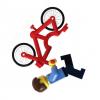
[MOC] Bigfoot Monster Truck
paave posted a topic in LEGO Technic, Mindstorms, Model Team and Scale Modeling
- 4 wheel drive - 4 wheel steer - 4-cylinder straight fake engine - 4 link axle - 4 long soft shocks for each axle - 4lding seats, rolling wheels - 4 steering there is HOG More photos: Building instructions: http://rebrickable.com/mocs/MOC-9667/paave/bigfoot-monster-truck/ -
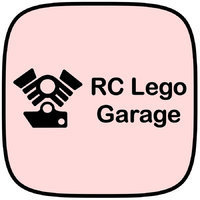
Blue Mamba V2 [MOC]
Daniel-99 posted a topic in LEGO Technic, Mindstorms, Model Team and Scale Modeling
Hello Eurobricks! Here is a Blue Mamba V2 - a wild mix of energy and rigidity. The story begins. Several months ago I build a fast off-roader for the King Of The Hammers competitions. The main idea behind that car was the minimalistic transmission. Well, there were now gears in the transmission, but there were CV-joints at the front axle and they were very weak! There was no way to fix that problem until one Russian AFOL comes with the custom wheel hubs with metal bearings and metal U-joints! These hubs allow to use a variety of RC wheels with 12 Hexes. Awesome! I purchased a set of custom hubs, and started the development of the Blue Mamba V2. Before diving into details I want to highlight another principal change in V2 project. V1 Mamba was powered by Buwizz 3.0 unit, but it drowned with my mid-scale trophy truck this spring. So for V2 Mamba I bought a custom Lego-compatible compatible RC controllers “Wixy” provided by another Russian AFOL. These controllers allowed me to use all benefits of GeekServo and Powerful 3S Lipo with 2600 mAh capacity. Bodywork. The car has a minimalistic bodywork. All panels used as structural elements. There is a plenty of space for the cockpit if one would sort all the wirings. The only decorative element is a fake V6 engine located behind the cockpit. Currently I have no PF motor available to make the engine work, but I keep in mind such possibility. Drivetrain. Blue Mamba V2 is a true E-vehicle with 4 PF L-motors powering each wheel independently without any transmission. Custom wheel hubs with metal bearings and metal U-joints make the transmission totally undestroyable. My goal was to minimize the width of the car. But the complexity of the front axle provided a lot of restrictions, so I had to widen front axle by 2 studs comparing to V1 Mamba. V1 Mamba has a steering motor located in the cockpit and linked to the front axle with new CV-joints. I replicated same configuration to the V2, but driving tests revealed big wobbling of the steering system, so I decided to place a GeekServo on the front axle (luckily it is very compact). A small regret is that GeekServo is not powerful enough for this wide and grippy RC wheels, It can not return them back if the car does not move. Likely, a positive caster angle of the front axle helps to back steering when car moves. Suspension. Mamba has 3-Link bridges at both axles with heavy-duty suspension arms. I had many attempts with the spring attachment. Finally, I understood that a responsive suspension requires a direct mounting of springs to the axles. 9.5 L shocks has very good springs (comparing to the soft 9.5 L one), but they were too hard for the car because all motors were placed on axles. An interesting idea came to my mind: why don`t you place these shocks diagonally? It works like a charm! Control. Car has a low center of gravity due to the placement of motors and 3S Lipo batteries. In addition, it has a proper wheel base and grippy tires, which makes the car very stable. Accuracy of GeekServo and RC transmitter provide a very smooth driving experience (though a stronger servo motor would improve the performance). Finally, 4WD helps to go through any terrain, such as sand, grass, etc… The top speed of the car is about 8.5 - 9 km/h. So it is very interesting to play with it outdoors and take it for a walk, since it has enough speed to drive back and forth while person walks. I tested this car with 120 mm RC wheels. The motors have enough power to handle and increased load while all the other plastic components (such as steering elements) were struggling a bit... On my opinion, 95-100 mm wheels are the optimal solution for fast outdoor cars. From one hand they provide a decent ground clearance and able to roll over the bumps. From the other hand they does not provide a lot of stress to the Lego parts. ' Conclusion. After multiple outdoor tests I conclude, that Blue Mamba V2 is the perfect Lego car, which is capable to go through any terrain with decent speed. It is strong and efficient and very controllable vehicle, which is pleasure to drive! Though It is too fast for trial. It is hard to go 2 km/h balancing between obstacles and barriers. But this is not a disadvantage, simply because each vehicle has it`s own areas of use. P.S. Speaking about Wixy Some of you wanted to know more about "Wixy" setup. So I placed all the component on the desk and marked them as follows: Wixy units RC receiver 3S Lipo PF motors Geek servo "Wixy" unit plays a role of an RC ESC unit, and it connects to the other electronic components in the same way: B-cable transmit the power from Li-Po batteries to the bottom PF connector (input) of Wixy units. A-cable feeds an RC receiver for Wixy units and translates the controlling signal at the opposite direction. Unusually for drive the "Channel 2" is reserved. PF motors get connected to the top PF connector (output) of Wixy units. GeekServo gets connected to the receiver. Two Wixy units provide enough power to feed GeekServo, otherwise I can plug and extra power from one of B-cable outputs (there is one specific 3-pin one). At the second picture all components are connected. It is important to note, that a Single "Wixy" unit can transmit only 3A to the motors, but it is the maximal power which PF connectors can handle . So you have to use one unit per Buggy motor. Luckily, 3S Lipo as an enormous amount of power, so it can handle 10 Buggy motors easily! Hope I cleared out the "Wixy" setup for you, but if you have any questions left, do not hesitate to ask them!-
- all-terrain
- 4x4
-
(and 1 more)
Tagged with:
-

[MOC] Lego Jeep Cherokee
filsawgood posted a topic in LEGO Technic, Mindstorms, Model Team and Scale Modeling
Hi all! My new model - is realisation in Lego - off-road custom based on the legendary american SUV - Jeep Cherokee (XJ). Everything according to the canons - axles, a rear differential lock, winch, snorkel, fenders, footrests, thick-walled pipe bumpers, an expeditionary trunk, chandelier and big wheels. -

[MOC] Blue Mamba fast off-roader
Daniel-99 posted a topic in LEGO Technic, Mindstorms, Model Team and Scale Modeling
Hey, Eurobricks! In this post I want to tell you about one of my latest MOCs, called Blue Mamba. It was made for outdoor King of the Hammers competition. Unlikely I was not able to participate in the competition this year, but I am not disappointed because it is very fun to drive this car. Main features 4-wheel drive In-axe motors (one PF L-motor for each wheel) 2 x Buwizz 3.0 units for power RC tires 97 mm Bodywork The race vehicles used at the King of the Hammers are known as Ultra 4 vehicles. This Ultra4 class is unlimited 4400, and every vehicle is custom fabricated by each team. Most of the vehicle made with metal tubular frame and plastic body panels. I tried to replicate the bodywork to match the real prototypes. Black pieces imitate a tubular frame of the car. Side panels and the hood are the structural elements of the chassis. The total weight of the car is about 1,280 grams. Half of the weight (4x PF L-motors) is located in axes, this is not good for the dynamics of the car at big speeds, but helps a lot in trial. Steering motor and Buwizz units are located in the cockpit. It is possible to lower them, so there is a reason to revisit the chassis once again. Suspension The rial race combines desert racing and rock crawling. So the Lego version of the race combines high-speed and trial sections. For good performance in trial Blue Mamba has a free articulation of a rear axe. The string are placed on the middle link, so rear axe can suspend jumps. Front axe has a limited articulation for a good control at high speed. Drivetrian Ultra4 vehicles has both powerful engine and the gearbox which allows to drive fast on straight lines and slow on rock-crawling segments. But Lego gearboxes has a significant disadvantage - a huge loss of torque. So I decide to place the motors in axes. This gives nearly zero losses, but has it`s own disadvantage: an extremal load on the CV joints which connects front motors to the wheel hubs. There is no way to deal with in without widening the wheel base and adding the portal reduction.. I hope some day Lego will make a new hubs that connects to new CV joints (without planetary reduction). In-axe motor placement provides some restrictions to the size of axes. I tried to maximize the ground clearance. Big wheels partially solve the problem. The resulting ground clearance in not big as one the cars with portal hubs has, but it is comparable to the ground clearance of cars with front independent suspension (there were several competitors with such configuration). Also it is worth noting that front and rear axes does not stick out from the side profile of the wheels, so Blue Mamba has great approach and decent angles. Control and Power The car is powered by two Buwizz 3.0 units. Powerful lego cars usually have a big problem. They can not go on a full speed for a continuous time since the driving motors consume a lot of power. I build many cars powered Buwizz 3.0 units. And I noticed that 2 Buwizz motors or 4 PF L-motors consume more power then the battery can give (in continuous drive). A good example of a car with 4 L-motors and 1 Buwizz unit is my Jeep Wrangler. To deal this problem, I places two units in the Blue Mamba. This doubles the travel range of the car and allows to drive Blue Mamba on full speed during the race. But multiple tests show that 1 Buwizz unit is enough for this car, since there are no losses in the transmission (in the first video car is powered by a single Buwizz unit). For steering a C+ L-motor is used. It is placed in a cockpit in between Buwizz units. Small scrab-radius, positive caster angle and proportional steering provide a good control of a car. Summary The competition has passed, and I there is a video on youtube: This allows me to compare my car with the other competitor cars. I would not win the race but perform good. I will look for the next King of the Hammers competition and prepare Blue Mamba to it. The following changes will be made: Buwizz units will be replaced with RC electrics The cockpit will be lowered for few studs The wheel base will be lengthened for 4-6 studs (to prevent the car from flips at high stairs in trial) I made a 3D model of Blue Mamba, but I have no motivation for making PDF instructions since Rebrickable does not work for me nowadays... Hope everything will be changed soon! Now we can only wait and play Lego! -

[MOC] 42139 Alternate - 4x4 quadbike
TGBDZ posted a topic in LEGO Technic, Mindstorms, Model Team and Scale Modeling
When I first saw the 42139 set, I knew I had to get one. From the functionality aspect, the set for the relatively small price tag has a lot to offer, and it's an amazing parts donor as well. But I believe that I wasn't the only one that thought the 6 wheel ATV is quite an unconventional vehicle and it would look rather cool to see this as a more common 4x4 quadbike. So I made an alternate / mod that turns this into more classic looking quad. The front and middle part of the build remains almost unchanged (switched 7 long beams from white to orange to make better looking rear mudguards), also there is an extra part at the front to secure the winch hook. Almost no changes means that the functionality remains the same: winch steering Suspension 2 speed gearbox Working cylinders The cargo box on the back is fixed, so the dumping bed mechanism has been removed. To compensate for this there is a place to attach a trailer. Leftover parts are a great source material for the trailer itself, sadly no pins were left to make a proper trailer to complement the quad bike. Oh, and the best part is that it's still possible to assemble the chainsaw If anyone is interested. building instructions are available at REBRICKABLE Cheers! -
Hello everyone! I have been lazy in the last two months with making new posts... But today I would like to snow you my DEEP MOD of a Lego 42099 set. This project was build in September of 2021, so it was build tested, improved and disassembled quite some time ago . Features: Original body of 42099 with custom RC chassis 4-wheel drive independent suspension with positive caster of all 4 wheels Double steering arms (for stability in jumps and bumps) Ackerman steering geometry with minimized stress on the joints 2 x Buwizz motors for propulsion C+ L-motor for steering 2 x Buwizz 3.0 for power (one unit is enought but I used two for longer driving distance) Total mass ~1,2 kg Planetary hubs, and fast output of Buwizz motors provides a lot of torque and a decent speed The beginning of the project Last summer I build myself a Red coupe. It was a good car, which is cool to drive. But,.. It was not adapted for the Russian roads . After several bumps and crashes, I decided to build a car that will overcome all obstacles on the road. So I started a new project, and all the circumstances (which will be shown later) strongly influenced the outcome! Then I was building a Red Coupe, I needed more red parts, so I bought two Ducati 42107 sets. I got charmed by new motorcycle wheels (i was dreaming of a car with such wheels)! The motorcycle wheels are light and have big diameter, that is important on the bumpy roads, so the wheels for my project were found. Also, at the very beginning of September I bought myself a 42099 set and I wanted to improve it with my new Buwizz motors. With 42099 I get planetary hubs which I desired to test from the time of their appearance, so all the choices was made! Underlying Ideas The main goal was to make a car with buggy motors (Buwizz motors) and a strong suspension. Also I waned to use planetary hubs since the original 42099 car has them. I have already learned that to be able to control a fast car, you need a well-designed steering system. As a minimum it should have a positive caster, and the double steering arms will also strengthen the steering system at the bumps.The main question for me was the following: Should I try myself in building front wheels drive, or not? Red Coupe project give me quite some experience in building solid suspension with positive caster: with steering at the front and with drive motors (without steering) at the back, but I never build a front wheels drive with positive caster and Ackerman steering geometry! My head was troubled with a problem: How can one fit differential and steering rack and a "broken car frame" (for castor) in between front wheels? Well, after a month of thinking, and multiple unsuccessful attempts, I found the solution. The idea was to make a horizontal car frame with suspension arms angled! My build is a little bit "illegal" since it uses the right triangle with side lengths 4,4,1, but it totally works with admissible Lego flexibility (an axle in a pinhole can wobble a bit). The steering motor and a steering rack was placed over the differential. The last problem it the project was with front joints. I waned to minimize the stress from the suspension travel and the steering. Since the car frame was build horizontal while the suspension arms were build at the positive angle, it was impossible to make the drive shaft lined with suspension arms... I placed the output of the differential a bit further to the front of the car, so the drive shaft was going a bit backwards from the differentials to the wheel hubs. This trick allowed me to make an Ackerman geometry without limiting the steering angle (in order to keep the front joints alive). After I overcome all the problems with the front wheels drive, the rest of the car was build by one evening! The drive shaft I used the fast outputs of Buwizz motors (one motor for front and the back). After that i speed them up with 20:12 ratio and connect to the differentials (20:28). Finally, planetary hubs slow the speed by 5.5 times.... Planetary hubs allowed me to have a bigger steering angle, but they slowed the car dramatically ;-) Although the max speed is good: ~7 km/h, so it is quite fan to drive the car during a wak in the park. 4x4 drive and proper suspension with good ground clearance (comparing to the Red coupe) make the driving experience very relaxing: no worrying about the bumps on the road! I can prove my words with a short video: Conclusion As a conclusion, I can say, that this project was very challenging for me, but the result is very satisfying: I really enjoyed driving it around my neighborhood. The main drawback of the model is that the Buggy motors uses too much power, and most of this power transforms into torque, and the car has way way more torque it will ever need!
- 5 replies
-
- 4x4
- buggy motors
-
(and 1 more)
Tagged with:
-
Enthusiastic about the suspension of the Octan Racing T1+ I thought about making a rigid axle for a Dakar truck But somewere things "changed" a little and finished with a "redneck" style 4x4
-

[MOC] Santa`s ultimate vechile
Daniel-99 posted a topic in LEGO Technic, Mindstorms, Model Team and Scale Modeling
Hello everyone! I know, that Christmas has passed, but i think it is not the reason to wait for the next one to show my new car. It is build on the same Chassis as my Jeep Wrangler [trial mod] Features: 4 wheel drive with locked differentials live axles suspension with 9.5 L shocks 4-wheel steering 120 mm RC tires with high grip 4x PF L-motors for propulsion PU L-motor for steering Buwizz 3.0 for power light tubular bodywork 1.15 kg of total mass (wheels are heavy!) 7 studs of ground clearance I would like to note, that this car is not a proper rock crawler due to the limited suspension travel. All this modifications took about 2-hours of build, but the car give a lot of satisfaction driving in the snow. It is capable for driving in the deep snow and climbing steep icy hills! I conclude, that this project is 100% successful! Hope you like it! -
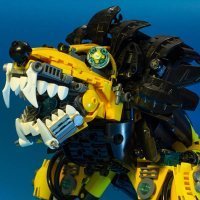
[MOD] 'Rusty Bucket' buggy
SilenWin posted a topic in LEGO Technic, Mindstorms, Model Team and Scale Modeling
Greetings, ladies and gentlemen! I'm glad to introduce you a modification of @Didumos69 Greyhound buggy Yeah, "Mad Max" inspired vehicle again First idea was just "increase durability and add some crawler abilities", but result exceed all my expectations. Adding planetary gear reduction 4:1 to all wheels increase offroad capabilities to sky high (keeping in mind perfectly working suspension of original) And final step - I decide to prepare for summer offroad Lego event in Moscow and for future festival, so I reworked exterior in postapocalyptic style. Other photos Here is LDD model of front hub with planetary gear reduction I used in my modification. Rear hub is done similarly, except for black connectors to suspension arms and without U-joint. Bonus: video from "King of the Hammers" race event in Moscow and photo from "Summer Brick" Lego festival in Taganrog, Russia Thanks to @Didumos69 for his amazing buggy and instructions, and also to @Shurik & @VerSen for cool photos! Hope you like this rusty piece of metal! -
Hello everyone, let me introduce my latest creation. Ever since I get 42093 corvette I had an idea to disassemble it and use all this parts to create something playable and offroad capable. This 1:15 model of legendary F-150 truck was made with Power Functions elements and Sbrick for future truck trial competion or just for indoor fun (because of the weight (1250 g) I think this is not very competitive truck). It was a long project for me because of time constraints so I had started it before LEGO release their bigger one. This model has 4WD transmission with 2 L-motors driving each axle separetly (driving ratio - 3,5:1), servo motor for steering. Front suspension is independent double wishbone, rear is live axle with panara link. The model has openable doors, sunroof, hood and tailgate. Instructions in pdf were made in Stud io (my first experience with this software so it took a long time). Link for instructions: https://reb.li/m/93403 Also I created some additional color options with available parts. I hope to add instructions for those and the video with the orignal orange one later.

